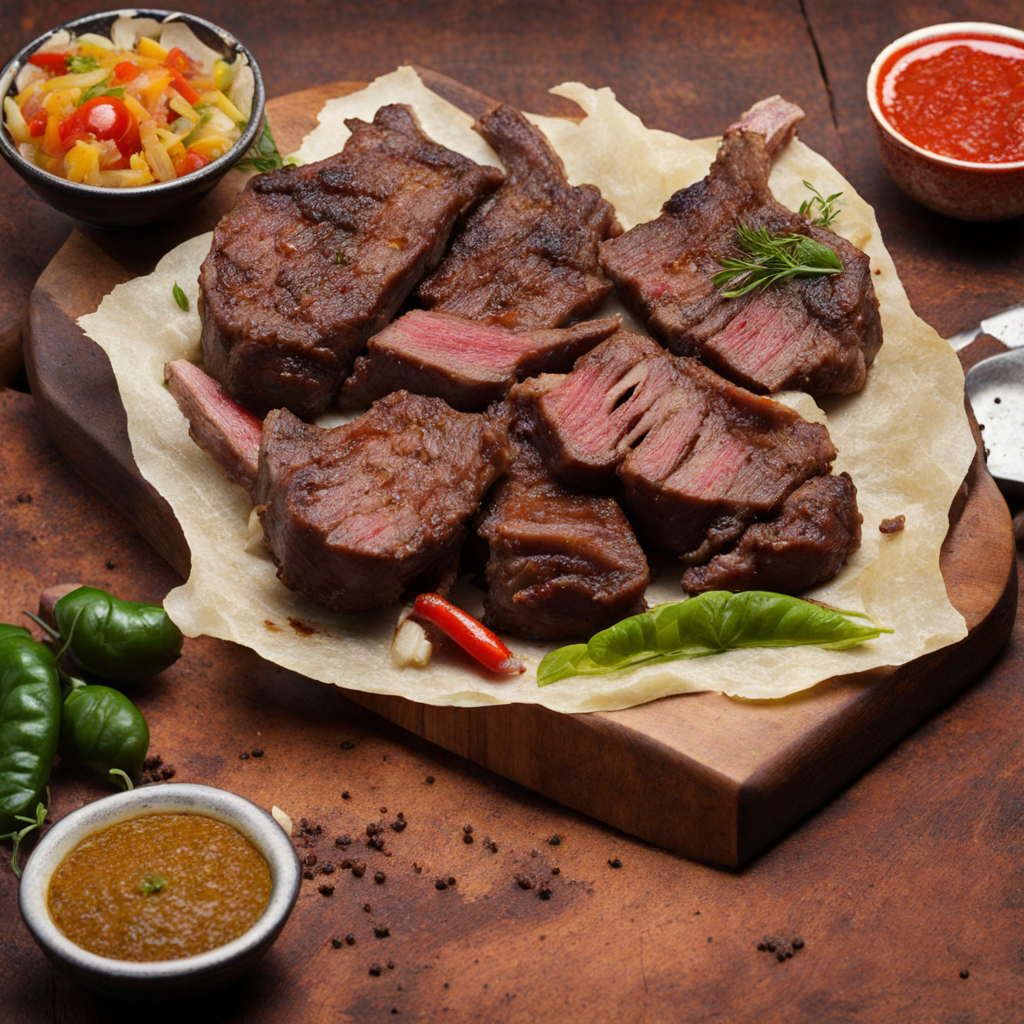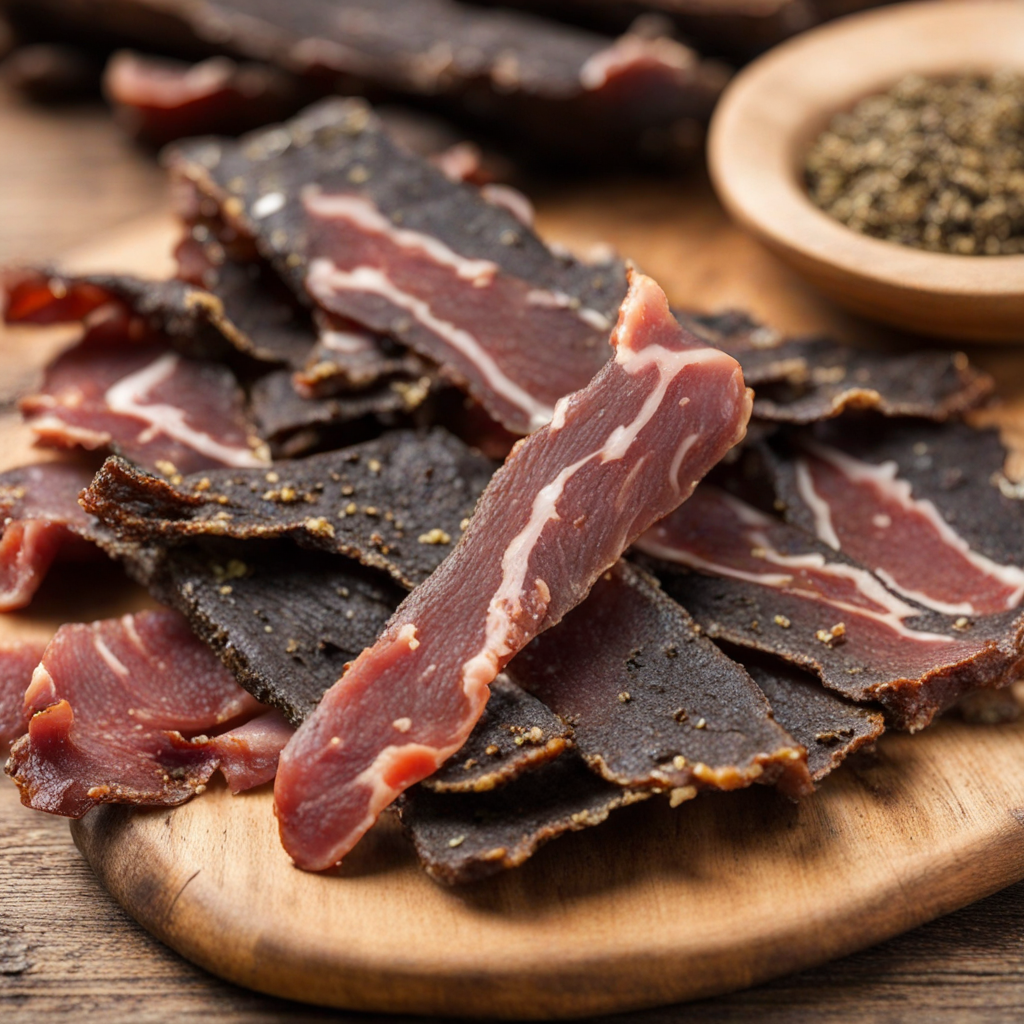Huku neDovi
Huku neDovi is a delightful traditional dish from Zimbabwe that showcases the rich flavors and culinary heritage of the region. The main ingredient, 'Huku', translates to chicken in Shona, and it is typically marinated and tenderly cooked in a creamy peanut butter sauce known as 'Dovi'. This unique combination of chicken and peanuts creates a harmonious blend of savory and nutty flavors that lingers on the palate, making each bite a culinary adventure. The dish is often seasoned with garlic, onions, and a medley of spices, enhancing its overall taste and aroma. The preparation of Huku neDovi is as important as the ingredients themselves. The chicken is usually simmered slowly, allowing it to absorb the rich flavors of the peanut sauce, resulting in tender and succulent meat. The Dovi sauce is made by mixing ground peanuts with water and spices, creating a luscious, thick consistency that envelops the chicken. This dish is often served with sides such as sadza (a staple maize porridge), which acts as a perfect accompaniment to soak up the delicious sauce, along with vegetables or a fresh salad to add balance and freshness to the meal. Huku neDovi is more than just a dish; it is a celebration of community and culture in Zimbabwe. Often enjoyed during gatherings and special occasions, it evokes a sense of togetherness and shared joy. The creamy, nutty flavors coupled with the tender chicken make it a comforting and satisfying meal that invites diners to savor every bite. For anyone looking to explore new culinary experiences, Huku neDovi is a must-try dish that encapsulates the essence of Zimbabwean cuisine.
How It Became This Dish
The Rich History of Huku neDovi: A Culinary Gem from Zimbabwe Introduction: A Taste of Tradition Huku neDovi, a traditional dish hailing from Zimbabwe, encapsulates the essence of the nation’s culinary heritage. The dish, which translates to "chicken with peanut butter," is not merely a meal but a cultural symbol that reflects the agricultural practices, social customs, and historical narratives of the Zimbabwean people. Origins: Roots in Agricultural Abundance The origins of Huku neDovi can be traced back to the indigenous communities of Zimbabwe, particularly the Shona and Ndebele peoples, who have lived in harmony with the land for centuries. Chicken, as a domesticated animal, holds a prominent place in Zimbabwean households. Historically, chickens were easy to raise and provided a reliable source of protein in a largely agrarian society. Peanuts, or groundnuts, are native to South America but were introduced to Africa by Portuguese traders in the 16th century. They became a staple in many African diets due to their adaptability to various soils and climates, particularly in the warmer regions of sub-Saharan Africa. In Zimbabwe, peanuts are not just a source of nutrition; they are integral to various cultural practices and culinary traditions. The marriage of chicken and peanut butter in Huku neDovi symbolizes the blend of indigenous ingredients with those introduced through trade, showcasing the dynamic nature of Zimbabwe's culinary landscape. Cultural Significance: More Than Just a Meal Huku neDovi is often prepared for special occasions, family gatherings, and celebrations, such as weddings and religious ceremonies. Its preparation is a communal activity, emphasizing the importance of togetherness and family bonds in Zimbabwean society. The dish is typically served with sadza, a staple made from maize, which acts as a perfect accompaniment, soaking up the rich and savory peanut sauce. In many Zimbabwean cultures, food plays a crucial role in storytelling and the transmission of traditions. The preparation and sharing of Huku neDovi often come with anecdotes and memories, linking generations through shared culinary experiences. The dish also serves as a symbol of hospitality; offering Huku neDovi to guests is a sign of respect and generosity, reinforcing social ties within communities. Development Over Time: Adaptation and Globalization Historically, Huku neDovi was prepared using traditional cooking methods, often involving a clay pot placed over an open fire. This method not only imparted unique flavors but also fostered a sense of community as families gathered around to cook and share stories. However, as Zimbabwe has undergone social and economic changes, so too has the preparation of Huku neDovi. In the latter half of the 20th century, particularly after Zimbabwe gained independence in 1980, the country's culinary landscape began to evolve. Urbanization led to a shift in cooking practices, with many families moving to cities and adopting modern conveniences such as gas stoves and electric appliances. Consequently, the way Huku neDovi is prepared has adapted to fit contemporary lifestyles. While traditional recipes remain popular, many urban cooks have begun to experiment with ingredients and techniques, incorporating spices and flavors from other cultures, thereby enriching the dish further. Moreover, globalization has played a significant role in the exposure and appreciation of Zimbabwean cuisine. With the rise of social media and travel, dishes like Huku neDovi have garnered attention beyond Zimbabwe’s borders. Food enthusiasts and chefs worldwide are increasingly interested in African cuisines, leading to a resurgence of traditional dishes on international menus. This has not only elevated the status of Huku neDovi but has also sparked interest in the rich culinary heritage of Zimbabwe as a whole. Contemporary Interpretations: A Fusion of Flavors In recent years, chefs and home cooks alike have embraced the challenge of reinventing Huku neDovi while respecting its traditional roots. Contemporary interpretations may include variations such as adding coconut milk for a creamier texture, spicing it with local chili varieties for heat, or even incorporating vegetables like spinach or sweet potatoes for added nutrition. These adaptations reflect broader culinary trends that embrace fusion and innovation while honoring the original essence of the dish. Furthermore, the rise of the farm-to-table movement has seen a renewed interest in locally sourced ingredients, which aligns perfectly with the philosophy behind Huku neDovi. Many chefs in Zimbabwe are now prioritizing the use of free-range chickens and organic peanuts, emphasizing sustainability and the importance of supporting local farmers. This trend not only enhances the flavor of the dish but also strengthens local economies and promotes agricultural practices that have been passed down through generations. Conclusion: A Dish of Diversity and Connection Huku neDovi stands as a testament to Zimbabwe’s rich cultural heritage and the resilience of its people. From its humble origins rooted in agricultural practices to its contemporary interpretations that embrace globalization and sustainability, this dish encompasses a journey through time. It serves not only as a meal but as a narrative of community, tradition, and adaptation. As Zimbabwe continues to navigate the complexities of modern life, Huku neDovi remains a cherished culinary staple, a symbol of identity, and a bridge connecting the past with the present. Whether enjoyed in a rural homestead or a cosmopolitan restaurant, Huku neDovi invites all who partake in it to savor the flavors of Zimbabwe and appreciate the stories woven into every bite. The dish is a reminder that food is not just nourishment; it is an experience that unites us across cultures and generations, celebrating the diverse tapestry of human history.
You may like
Discover local flavors from Zimbabwe







